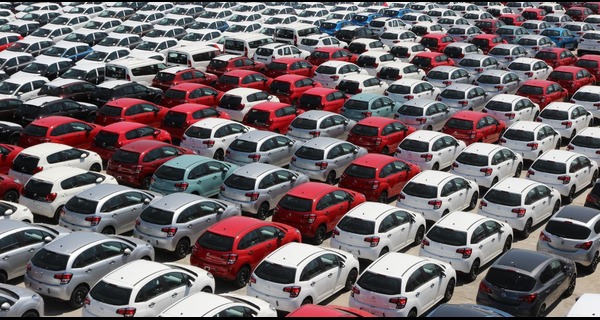Amidst economic challenges, the automotive market in Venezuela showcased resilience and promising growth in the year 2023, marking a substantial expansion in its market size. In the face of unique circumstances, the automotive sector in Venezuela is poised for further development, with expectations of a compound annual growth rate (CAGR) of 2.60% between 2024 and 2032.
This growth signals not only a testament to the enduring demand for vehicles in the region but also underscores the industry’s adaptability in navigating the complexities of the local market. In this exploration, we delve into the driving forces behind the expansion, the market dynamics shaping the automotive landscape in Venezuela, and the potential implications for industry stakeholders and consumers alike.
The automotive market in Venezuela has experienced a complex and dynamic journey, shaped by economic challenges, political instability, and shifts in consumer behavior. This article provides an overview of the key aspects, historical developments, and current state of the automotive industry in Venezuela.
History and Evolution
The history of the automotive industry in Venezuela can be traced back to the early 20th century when the first cars arrived in the country. Initially, the sector witnessed slow growth due to limited infrastructure and economic constraints. However, with increasing urbanization and economic development in the mid-20th century, the demand for automobiles began to rise.
The 1970s and 1980s marked a period of significant expansion in the Venezuelan automotive market. Local assembly plants were established, and the industry became a vital contributor to the national economy. A range of international automakers set up operations in Venezuela, fostering both domestic production and importation.
Economic Challenges and Impact
In recent decades, Venezuela has faced severe economic challenges, including hyperinflation, currency devaluation, and political instability. These factors have profoundly impacted the automotive market. Escalating inflation rates have made vehicle prices soar, making it increasingly challenging for the average citizen to afford a new car.
Additionally, scarcity of foreign currency has led to difficulties in importing parts and components, affecting both local production and maintenance of existing vehicles. The economic downturn has significantly hampered the growth and stability of the automotive industry, transforming the landscape of vehicle ownership and manufacturing in the country.
Consumer Behavior and Preferences
The economic challenges in Venezuela have also influenced consumer behavior in the automotive sector. Many consumers have shifted towards the used car market due to the more affordable prices compared to new vehicles. Additionally, a focus on fuel efficiency and cost-effectiveness has become more pronounced as fuel prices and economic uncertainties persist.
Electric vehicles and alternative fuel technologies, while gaining attention globally, have seen limited adoption in Venezuela. The challenges associated with infrastructure development and the economic conditions have slowed the integration of these technologies into the mainstream automotive market.
Government Policies and Interventions
The Venezuelan government has played a pivotal role in shaping the automotive market through policies and interventions. In an effort to stimulate local production, governments have implemented measures such as import restrictions, tariff adjustments, and incentives for local assembly. These policies, however, have often been subject to changes, contributing to uncertainty within the industry.
Efforts to encourage sustainable practices, such as promoting electric and hybrid vehicles, have been hindered by economic constraints. The government’s focus has frequently shifted between addressing economic challenges and supporting the automotive industry’s growth, leading to a delicate balancing act.
Current State and Future Prospects
As of the most recent developments, the Venezuelan automotive market continues to grapple with economic difficulties and political uncertainties. Local production has faced setbacks, and consumers navigate challenges in acquiring and maintaining vehicles. The industry’s future prospects are closely tied to broader economic recovery and stabilization efforts.
Industry Challenges and Resilience
The Venezuelan automotive industry has confronted numerous challenges, but it has also demonstrated resilience in the face of adversity. Economic instability, hyperinflation, and political uncertainties have created a volatile business environment. Supply chain disruptions, currency devaluation, and the scarcity of foreign exchange have all impacted the industry’s ability to operate smoothly.
Despite these challenges, local dealerships and service centers have adapted to the conditions. Some have diversified their offerings to include not only vehicle sales but also maintenance services, spare parts, and even pre-owned vehicle certification programs. This adaptability has allowed certain players in the industry to weather the storm and remain operational.
Impact on Dealerships and Service Centers
Venezuelan automotive dealerships and service centers have had to navigate the complexities of sourcing spare parts, often facing shortages due to import restrictions and economic difficulties. Additionally, maintenance costs have risen, affecting both businesses and consumers.
The decline in new car sales has prompted dealerships to focus on providing quality after-sales services to maintain customer loyalty. Some have also explored alternative revenue streams, such as offering financing options, insurance packages, and innovative maintenance plans to enhance customer satisfaction and ensure long-term viability.
Shifts in Ownership Patterns
The economic challenges in Venezuela have led to shifts in vehicle ownership patterns. Owning a car, once considered a symbol of status and prosperity, has become more challenging for many citizens. As a result, there is a growing reliance on public transportation and shared mobility solutions.
Ridesharing services and carpooling have gained popularity in urban areas as cost-effective alternatives to individual car ownership. This shift reflects a pragmatic response to economic constraints and an evolving mindset toward transportation in the face of changing economic conditions.
Government Initiatives and Industry Outlook
The Venezuelan government has recognized the importance of the automotive industry in the national economy and has, at times, implemented measures to support its recovery. This includes initiatives to stimulate local production, streamline import processes, and provide financial support to manufacturers and dealerships.
The industry’s outlook depends on the country’s ability to stabilize its economy and implement long-term policies that foster a conducive business environment. Potential collaborations with international partners, technological advancements, and sustainable practices will play key roles in shaping the future trajectory of the Venezuelan automotive market.



